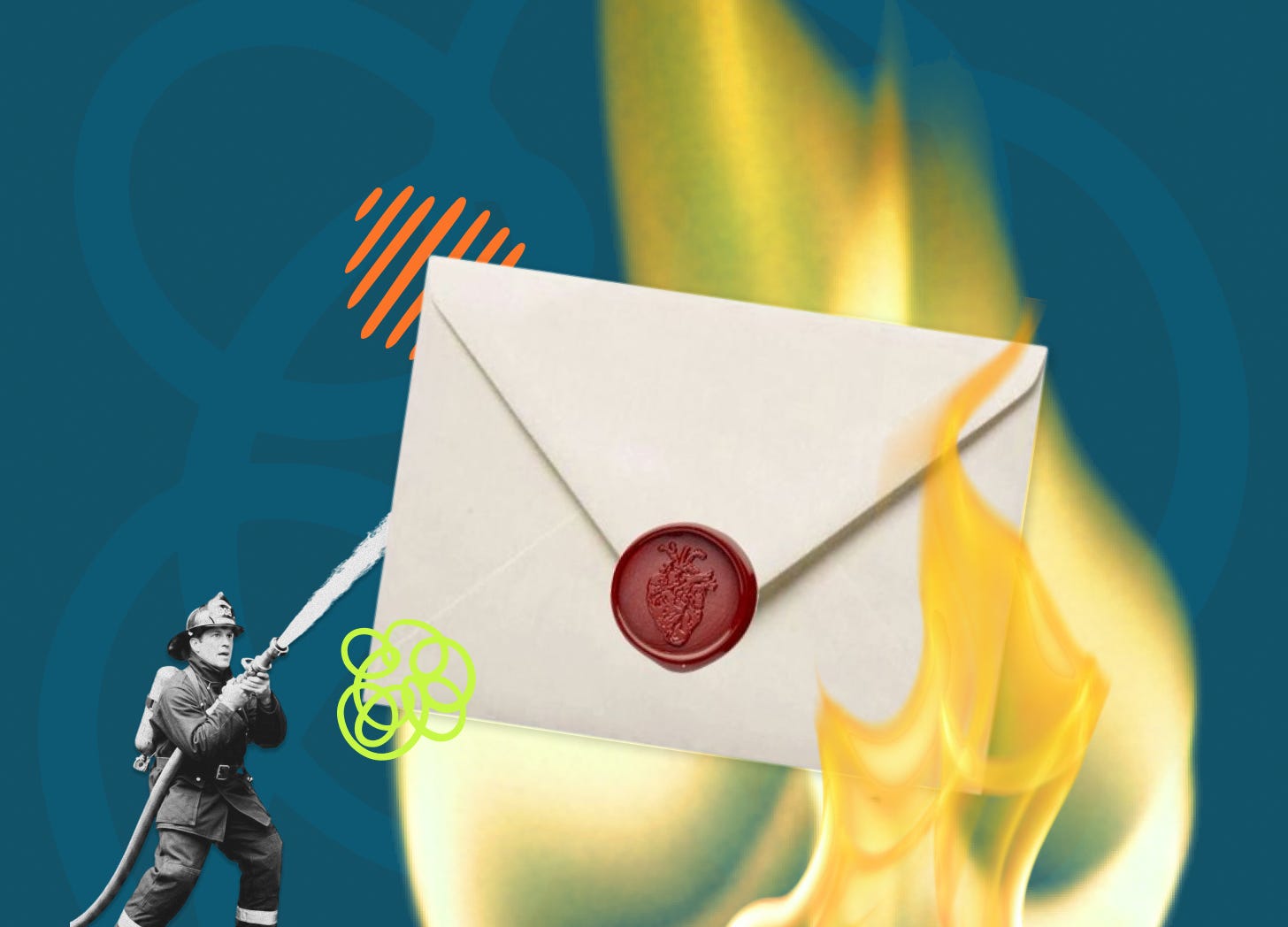Using HubSpot Sequences for Outbound > Burn Your Domain
Why HubSpot isn’t built for cold outreach — and how to keep your domain off every spam list on the internet
The Mistake That Can Nuke Your Domain
A few weeks ago, a marketing director reached out to ask if they could use HubSpot Sequences to run a cold ABM campaign targeting banking executives. It’s a question we hear often. HubSpot is already the CRM. The interface is smooth. It integrates directly with Gmail or Outlook. It even lets reps send personalized messages at scale. What’s not to love?
The problem is, on the surface, everything looks like it’s working. Emails are being sent. No bouncebacks. Reps are logging activities. Everyone assumes deliverability is fine.
Until it isn’t.
Until a key account never replies.
Until demo requests mysteriously drop.
Until support emails start hitting spam.
That’s when you realize: the infrastructure beneath your email strategy isn’t just fragile — it’s invisible.
What’s Happening When You Send an Email
Behind every “send” button, there’s a delicate negotiation taking place between your server and the recipient’s inbox provider. It doesn’t matter whether it’s Gmail, Outlook, or something else — they all have one goal: to protect their users from spam.
To make that decision, they look for signals.
Is this email authenticated? (SPF, DKIM, DMARC)
Is this sender reputable? (Domain & IP reputation)
Does this message look like spam? (Volume, content, links, formatting)
Each one is a vote either for or against you.
The scary part? If you’re using a shared IP or your core domain for cold outreach, even one campaign gone wrong can tank your entire reputation.
The HubSpot Assumption
Most teams using HubSpot Sequences for outbound are doing so in good faith. The logic makes sense:
“It sends from my Gmail, so it’s fine.”
“We’re personalizing everything.”
“It’s just a small list.”
But here’s the catch: HubSpot Sequences feel like they were built for outbound, but they weren’t.
Sequences were designed for warm sales engagement — people who have filled out a form, booked a call, or interacted in some meaningful way. Not net-new cold outreach.
When you use Sequences to blast a cold list, you’re not just breaking best practices. You’re skating right past the edge of HubSpot’s Terms of Service, and into territory where your emails can:
Get marked as spam
Trigger internal compliance reviews
Harm your entire org’s deliverability
But Doesn’t HubSpot Use My Gmail?
Yes — and that’s part of the illusion. It sends through your connected Gmail or Outlook account, but:
Tracking links (opens, clicks) can raise spam flags
The volume and similarity of messages can trigger filters
HubSpot’s backend routing still touches shared infrastructure
And here’s the kicker: paying for a dedicated IP in HubSpot? That only applies to Marketing Emails, not Sequences.
So no, you’re not shielded. You’re exposed.
The Ripple Effect of a Burned Domain
When your sender reputation takes a hit, it doesn’t just impact one rep. It impacts everything tied to your domain:
Sales emails stop getting replies
Support emails get caught in spam
Billing emails bounce
Your hiring team gets ghosted
You’ll never see an alert. No dashboard warning. Just silence.
Why Tools Like SmartLead and Instantly Exist
Cold outreach isn’t inherently bad. It’s how most B2B businesses grow. But it requires infrastructure that protects your core brand.
That’s why tools like Instantly, SmartLead, and Lemlist exist. They weren’t built just for automation. They were built for insulation:
You send from secondary domains
You rotate across inboxes
You warm everything up slowly
You monitor deliverability in real-time
They treat outbound not as a sprint, but a system.
What To Do If You’re Stuck With HubSpot
Sometimes you can’t get new tools approved. Security, procurement, timing. We get it.
Here’s how to run a low-risk, semi-scalable outbound program within your constraints:
Buy a secondary domain. Think hello.yourcompany.com or yourcompanyhq.com.
Create inboxes for reps (e.g., sarah@hello.yourcompany.com).
Configure SPF, DKIM, DMARC, and MX records. You need that technical trust.
Connect those inboxes to HubSpot.
Warm up slowly. Start with manual sends. Monitor replies.
Use Sequences sparingly. Avoid tracking clicks. Keep volume low. Make it human.
This isn’t perfect. But it’s better than risking your core brand.
When Sequences Actually Shine
HubSpot Sequences aren’t the villain here. They’re great at what they’re meant for:
Following up with inbound leads
Nudging people after a call
Staying top-of-mind post-demo
Managing warm relationships at scale
When the contact already knows who you are, Sequences are magic. Just don’t ask them to do a job they weren’t designed for.
Final Thought
Email is still the backbone of most B2B sales motions. But it’s not just copy and timing that matters — it’s infrastructure. The silent systems under the hood determine whether you ever get seen.
Your domain is a long-term asset. Protect it.
If you’re doing cold outbound, either use the right tools — or isolate the risk.
Don’t let convenience today nuke your entire GTM motion tomorrow.




I never stop learning. So many takeaways in this that anyone can put into action immediately. You guys are killing it, as always.